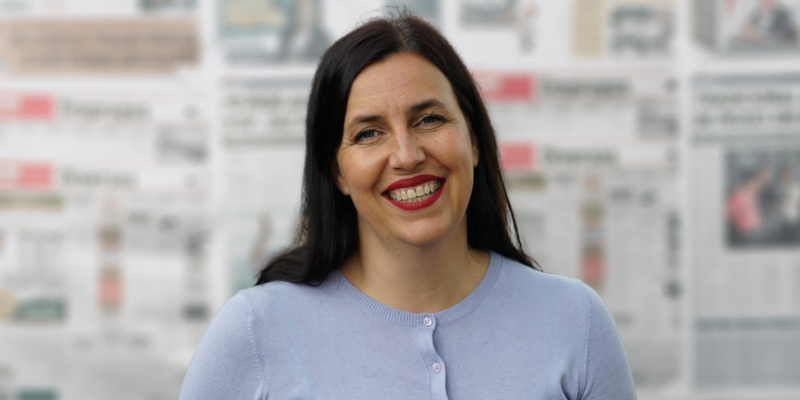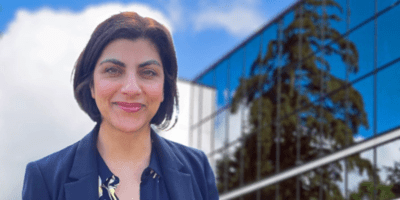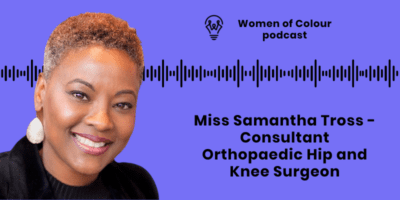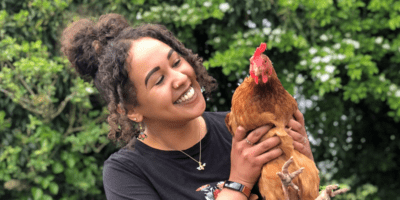Luba Kassova is co-founder and director of international audience strategy consultancy AKAS (Addy Kassova Audience Strategy), which helps purpose-led organisations in the UK and globally. In recent years, she has focused on writing, producing evidence-based storytelling in areas she is passionate about, including gender and racial equality, free media, social cohesion and education. Prior to setting up AKAS, Luba headed up consumer/audience insight teams for BBC Journalism, Cancer Research UK, BT Vision (BT’s television arm), and her work has been published or quoted in more than 75 countries by 400+ news providers and organisations.
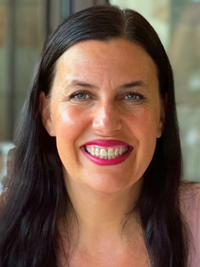
“The interviews I conducted with news editors who are women of colour revealed that there are a number of challenges women of colour face that other women don’t.”
A fascination for different people and their cultures
I have two master’s degrees, one in sociology from Sofia University, where I did my first degree. I subsequently won a scholarship to do another master’s degree at the University of Sussex on contemporary European studies, and more recently still, I completed behavioural science modules at the University of Warwick and the London School of Economics (LSE).
Behavioural science is something I’ve become interested in more recently in the context of my work and my passion for understanding human beings, and helping organisations understand human beings so they can use that understanding to improve their strategies and products, whether they’re non-for-profits or for-profit organisations.
In terms of my career, I started off as an audience researcher in media organisations. My first job was at the Discovery Channel, which was fantastic. I then had various other jobs at the Hallmark Channel , and then BT Vision, where I headed up their insight team when they were setting up their television proposition for the first time.
I then moved to an amazing job for BBC News, where I was heading up the audiences team for the journalism. (This is where I met my business and life partner, Richard [Addy], with whom I share a consultancy called AKAS.) My final job before setting up AKAS with Richard was heading up the insight function for Cancer Research UK.
Setting up the consultancy was a way of finding creative freedom, but also freedom to raise our children in a way that allowed us to spend time with them as well as do our work.
I’ve been doing my consultancy work for more than a decade now. It’s an audience strategy consultancy, centring around understanding people, whether they’re consumers, customers, audiences, and then using that insight to help organisations.
For the vast majority of my career, I’ve been a researcher and an audience strategist, but in the last four I changed the direction of my work to fit my passion for writing and away from data analysis and presentation writing!). I devote much of my professional efforts to non-fiction, evidence-based narrative writing. This is how I ended up working with the Bill and Melinda Gates Foundation on the Missing Perspectives of Women in News series of reports. The third of this series is the most recent one. (More on than later..!)
Immersing myself in news
There are several elements to my work, but first and foremost, I read lots of articles. I’m immersed in news on a daily basis. I work with news organisations and foundations that have media departments, so news is really important to me. I also read various research or academic articles in the areas of my expertise/interests.
I write a lot too — articles, blogs or reports. I also do a lot of interviewing. I’m about to start interviewing amazing journalists (in this instance all female) who work in Ukraine in the context of the fact that in February it will be a year since the war started, so I feel it is important to mark this. I’d already written articles about their work a few months ago, but I also want to see how experiencing the hardship of war has impacted on their lives, views, hopes and dreams.
Missing Perspectives of Women in News: From Outrage to Opportunity
The Missing Perspectives of Women in News series consists of three reports, all of which have been commissioned by the Bill and Melinda Gates Foundation, written by me and researched/produced independently by my consultancy AKAS.
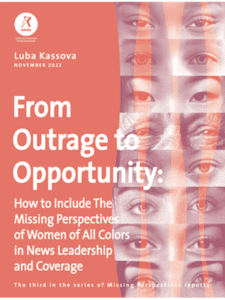
The first challenge is how to improve women’s representation and how to improve inclusion in news leadership. I should preface this by pointing out that the first two reports found there’s been a stagnation in the last 15 to 20 years whereby women have remained a minority in news leadership consistently across all the countries that we looked at around the world, some in the global north and some in the global south
And not only that, but even when women are well represented in news leadership, for example, they often don’t feel included in decision-making. So, the objective of this third report was to understand why is that the case. Why are women not included? In this report we also expanded the lens to include race to overlay race onto gender, which was revelatory. (More in this later…)
The second challenge that this report addressed was how to improve the share of voice of women in news coverage, where again women are very marginalised — just 15% to 30% of voices in news belong to women, which has been the case for the last 10-15 years. Of course, that shouldn’t be the case. And when you look at coverage through an intersectional lens, then women of colour are almost invisible in news, so the report considered: How do we unlock progress and How can we change that?
There are 12 solution steps that have been identified along the whole news value chain starting from from resources e.g. representation and inclusion of women in leadership in newsrooms, news gathering, news coverage, and news consumption. Within these 12 steps, there are something like a hundred offered solutions to help news organisations make progress.
What makes this report unique compared to the previous ones is that I did interviews with 41 senior editors from across the world, who shared their invaluable perspectives. That comes on top of numerous robust quantitative methodologies including analysis of millions of stories, hundreds of surveys academic papers, existing news initiatives, etc.
Creating a safe space for senior news editors to express their views
It was vital to create a safe space for people to share their thoughts and experiences. It was very important for me to really understand and build a comprehensive picture of the systemic, institutional and individual challenges that held progress back for decades and of the opportunities that could unlock it for the news industry.
To secure interviews with busy senior editors I provided substantive background as to why the project was being conducted and guaranteed their anonymity and confidentiality. In some instances, I approached editors to share their expertise on record. It really helped that the previous Missing Perspectives reports had gained traction internationally and had been covered widely by hundreds of news providers across 75 countries, so that meant our reputation preceded the research we were doing.
Another element which was really important to nurture the relationship with the interviewees was to explain how the interviews were going to be used, and to follow up with everyone post-interview. After most interviews I sent an email synthesising what the key points were and what stood out for me, which served to build trust.
Finally, before actually publishing the report, I went back to all the editors and experts I had interviewed. Prior to writing to them I revisited their answers to one of the questions I had asked them: “What do you think would make this report more likely to be read by people in power, who tend to be men, and in the global north white men.” So, most of them had shared their views about what they thought would make it more pertinent.
Then, before publishing the report, I wrote to everyone reminding them what they had told me and highlighting how I had addressed their suggestions in the report so that they could really see the impact of their interview.
Ultimately, together we came up with a number of solutions that would unlock progress for women in news, not only in terms of their representation, but in terms of their inclusion and in terms of featuring their voices and their stories more prominently.
Amplifying the voices of women of colour
I mentioned earlier that overlaying an intersectional lens was absolutely revelatory. I was an author of two very successful reports about the missing perspectives of women in news prior to starting this work, but until this point I had absolutely no idea how much harder some women have it than others in news, and this was an incredibly humbling exercise.
This research brought the importance of measuring representation and inclusion of women intersectionally to the fore. When we fail to do that (which is the majority of the time), we default to championing the most dominant group within the overall group of women, which certainly in the global north tends to be white, highly educated women who earn good money and often are second or even third generation professionals.
Analysing women as a homogenous group results in women of colour remaining invisible, and this is very much what the report found. One pivotal insight was that out of the 45 news organisations in South Africa, the UK and the US whose diversity reports we analysed, we found that only one had reported representation of women intersectionally. So, not only are women of colour invisible, but there is very little hope of that changing unless organisations start to measure representation and inclusion intersectionally.
The interviews I conducted with news editors who are women of colour revealed that there are a number of challenges women of colour face that other women don’t. What happens is that they’re experiencing a quadruple bind — news editors who are women of colour face all the challenges that women in news leadership face. And, on top of those they have to deal with barriers specifically related to their race. They’re then often expected to resolve the problem of their own underrepresentation in organisations by being thrust into DEI initiatives, which can sometimes have a negative impact on their career progression.
Women of colour are often seen as absolutely key people who, who support their peers — they support those above them and they support their teams, so they’re indispensable in a way but they are rarely rewarded according to their talents so this leads to women of colour experiencing disproportionate burnout, and are more likely to leave news organisations than other groups.
Essentially, they’re less likely to be able to break into news leadership than other women because of these institutional challenges they face.
Often because women of colour are not given the voice and the seniority editorially that they deserve the stories of the communities they come from are often overlooked or dismissed as non-stories, so news coverage through the lens of women of colour is absent.
The work that makes me most proud
Of all the work I’ve done over the years, the thing I’m most proud of is the one that’s generated most real-world impact. The Missing Perspectives report series (I’ve focused on the third one here) led to real change for specific organisations.
Some news organisations and foundations lifted the recommendations and implemented them. In addition, the reports were quoted or covered in more than 75 countries, in more than 400 publications. I was immensely proud of that, but I was even more proud that in Australia an incredible woman called Phoebe Saintilan-Stocks was so impacted by the Missing Perspectives of Women in News report that in 2021 she set up a media platform called Missing Perspectives.
To date, the Missing Perspectives media platform has featured more than 60 female journalists from 50 countries. Phoebe left her job and dedicated herself fully to running the initiative and the work they’re doing now is pretty amazing, elevating the voices of young female journalists on the ground who otherwise would’ve not had the opportunity to tell their stories internationally.
Mursal Nabizada was an MP in Afghanistan who chose to stay when the Taliban took over, such was her commitment to fighting for girls education. She was killed today after being shot at her home. The message for Afghan women – shut up or be silenced. So we’ll roar until you can. pic.twitter.com/3kd5zNoJQj
— Missing Perspectives (@missingperspec) January 16, 2023
More recently, following the death of my father from COVID, I wrote an article in the Guardian about the appalling way in which elderly people in Bulgaria were deprioritised when it came to COVID vaccination. The article instigated a televised debate in Bulgaria between the outgoing and the incoming health ministers, and eventually to changes.
Also recently I co-wrote an article with Angelina Kariakina – a journalist in Ukraine – which was printed and published online in The Guardian, about the forgotten elderly women in Ukraine during the war. I had people from Age International contacting me and thanking me for writing this piece of work and how important that was. It meant so much.
When I’m down and I feel exhausted, or I feel demoralised, I always think of these projects that have generated impact, and that helps me to keep going.
Coming up
I’m still in the process of promoting From Outrage to Opportunity, which I’ll be doing over the next few months. This year, I’m taking part in the International Journalism Festival in Perugia, one of the most prestigious in the world, which I’m very enthused about. I’ll be presenting this work together with Richard Addy and with a great panel of editors from around the world.
I’m also writing a book, which I am incredibly excited about. It will be dedicated to the relationship between our emotions and how empowerment. It will explore ways we can navigate our emotions such that we feel more empowered in our lives. So far, I have completed 70 interviews for it out of the hundred that I’m planning to do, so do read the blog on my website and follow me on LinkedIn for all the details of it when it’s released!

